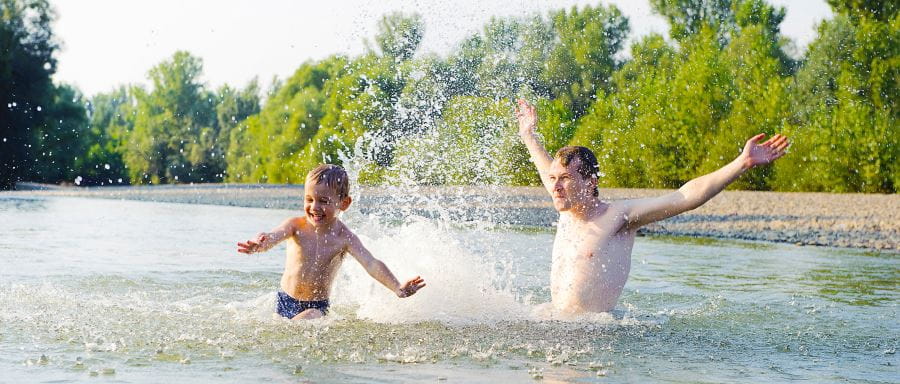
Inland waterways are dynamic environments that change within hours, days and weeks. This can make them difficult to navigate safely when going for a kayak, swim or enjoying your favourite water sport.
How do you know if it is safe to swim in a river?
There are many things to look out for before getting into a river. One of the easiest things you can do is check the current forecast. Is there a forecast for strong winds, thunder or lightning? Whilst wind may be great for sports like sailing, it can increase the danger of swimming, as with heavy winds come stronger currents.
Other things to check for include current water-quality reports, health reports and any signage nearby. When you first get to the river, conduct a visual scan and look out for any potential dangers. These may be as simple as some slippery rocks or shallow water.
Are you prepared if something does go wrong?
While WA boasts many beautiful rivers such as the Swan, many of our most popular rivers are in remote areas. When enjoying these rivers, it is important to be equipped. Be sure to have a first aid kit in your car, up to date lifejackets for boating or kayaking and be resourceful: towels and esky lids both make great rescue aids! It is also pays to know the nearest medical centre and have the ranger's number handy.
Do you know the best way to fight hypothermia?
Accidental fall ins occur more commonly than you might think. When we accidently fall into the water we are often fully clothed and less prepared for the cold-water environment. The best way to fight hypothermia is by floating and restricting movement, as too much movement results in fatigue.
--
Keen to learn more about being River Ready? Join one of our fun and educational courses on the river. These courses are a great weekend activity to share with family or friends and most importantly, you learn lifesaving skills such as CPR to keep you safe in all waterways all year round.
For more information, click the link below:
